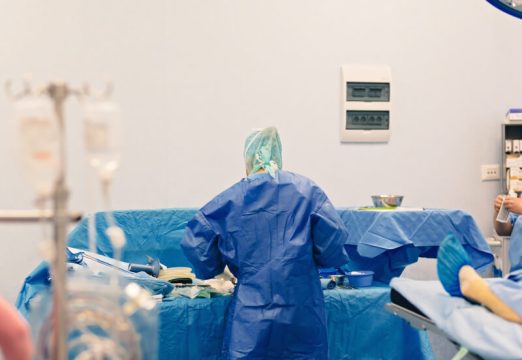Patients suffering from immune-mediated chronic inflammatory disease (CID) face a high risk of developing heart disease, including aortic valve disease. Inflammatory vascular disease when triggered by an autoimmune condition, can prompt a harmful response leading to valve degeneration, with increased calcification and fibrosis, and the associated progression of stenosis, failure or both. Prior research has…
CAPTIS, a Novel Cerebral Embolic Protection System in TAVR
The incidence of stroke after TAVR ranges between 2 and 5%, depending on the series, which has been associated with higher morbimortality, affecting patient quality of life and their psycho-social environment. Many cerebral embolic protection systems have been developed in response, and even though they have been shown beneficial in many studies, their role in…
Cerebral Embolic Protection Devices: How Useful are they in TAVR?
During TAVR, we often fear the possibility of a stroke, which occurs in approximately 1 – 2% of cases. In general, this phenomenon is caused by thrombi stemming from atherosclerotic or calcified plaque, depending on the etiology. Even though its incidence has declined with technology development and the increasing expertise of operators, it is still…
TAVR: Does HALT Affect Follow-Up?
Transcatheter aortic valve replacement (TAVR) in low-risk patients has been shown to be superior or noninferior in randomized studies, but the presence of valvular thrombosis, in its different forms, has not been well analyzed, nor is there much information on its impact on evolution. Researchers conducted an analysis of the LTR study that included 200…
Redo Surgical Aortic Valve Replacement after Prior Transcatheter vs Surgical Aortic Valve Replacement: A Growing Population
Transcatheter aortic valve replacement (TAVR) has evolved since it was first implemented, and it is now also used to treat low risk patients. One of the questions this has raised is whether patient life expectancy is higher than prosthesis life expectancy. The growing population in need for valve replacement also poses the question of how…
Is Rehospitalization a Relevant Factor after Aortic Valve Replacement?
Patients with severe symptomatic aortic stenosis treated with aortic valve replacement might still present cardiac failure, even after successful procedures. According to some reports, the incidence of cardiac failure after TAVR varies between 9% and 24%. The prognostic relevance of rehospitalization in these patients has not been studied yet; in fact, it remains unclear whether…
EuroPCR 2022 | Changes in Cardiac Damage after Surgical Aortic Valve Replacement
This study presented at EuroPCR 2022 analyzed the PARTNER study pool and included 1974 patients with a complete echocardiogram. Surgical risk was 17.3% extreme/inoperable, 54.3% intermediate and 28.4% low. 60% received transcatheter aortic valve replacement (TAVR) and the rest surgical aortic valve replacement (SAVR). 6.1% of patients were in stage 0 (no damage), 14.5% were…
Cardiac Damage: Should we start to assess it?
Courtesy of Dr. Carlos Fava. The current recommendation for aortic valve replacement is based on stenosis severity based on valvular criteria (mean transvalvular gradient, peak aortic velocity and valve index area) and the presence of symptoms, in addition to comorbidities, mainly for risk stratification. However, ventricular damage and/or its effect on cardiovascular hemodynamics are not regarded…








